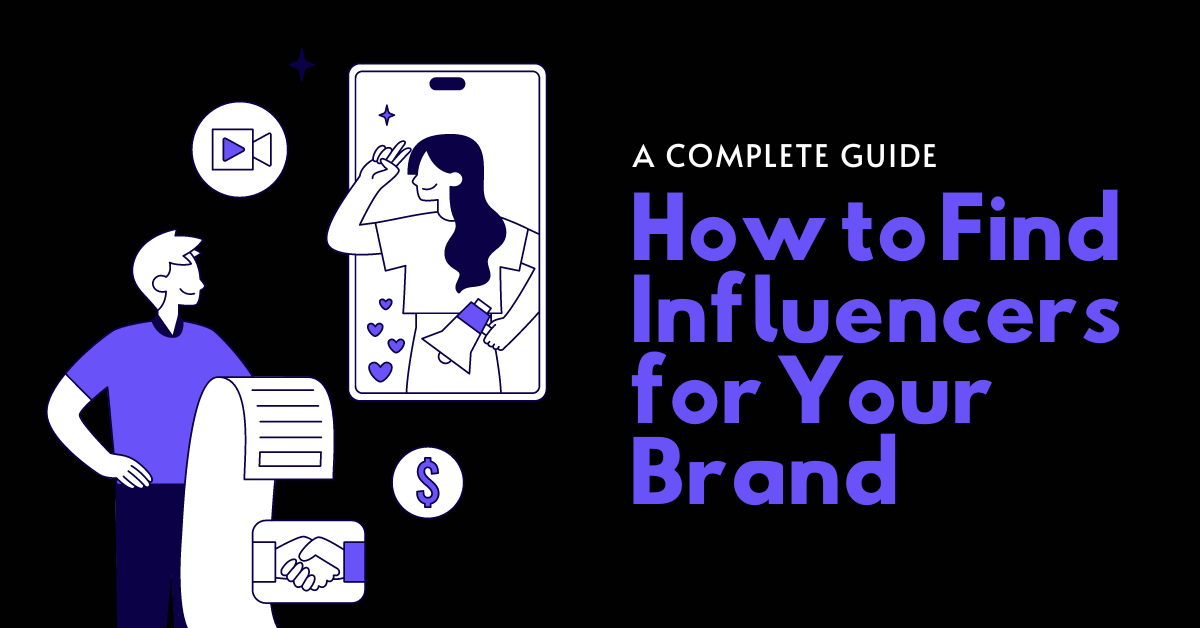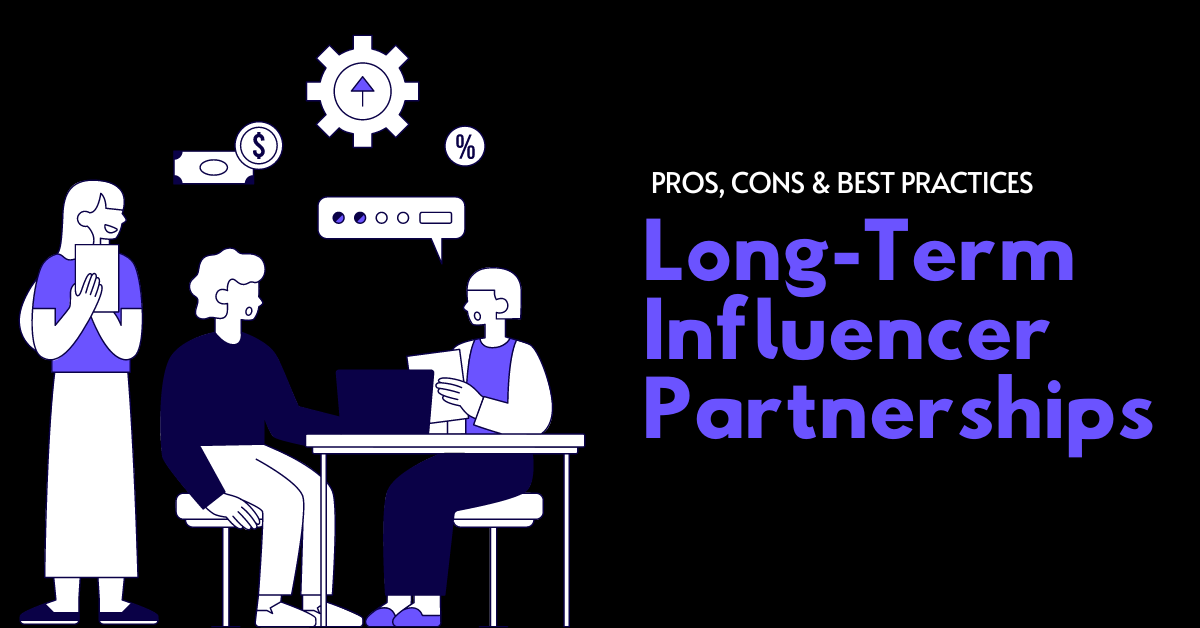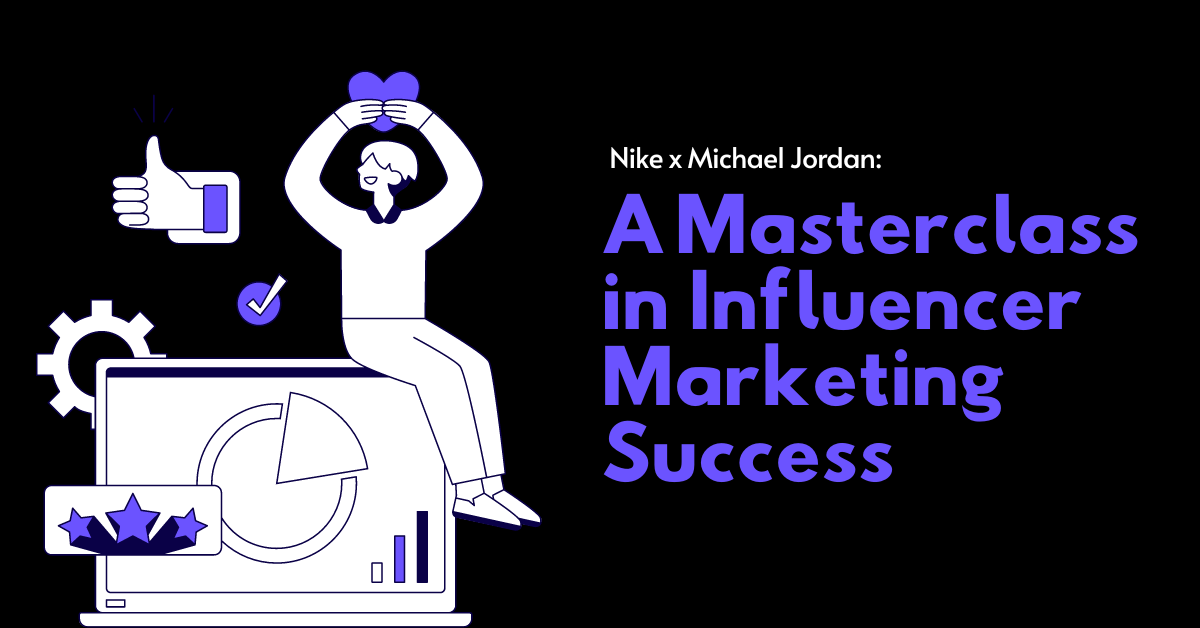Influencer Marketing has become a powerful strategy for brands to connect with their target audience in an authentic and impactful way. The numbers speak for themselves – 60% of marketers report that content created by influencers performs better than branded posts, leading to increased engagement.
With over 4.95 billion active Social Media users worldwide, the potential pool of influencer partners is vast. However, with this comes a challenge – how do you find the right influencers who align with your brand’s values and resonate with your target audience?
According to an Influencer Marketing report, 81% of marketers cite finding the right influencers as their biggest challenge when it comes to Influencer Marketing campaigns. If you’re struggling to find influencers for your brand, you have come to the right place.
In this comprehensive guide, we’ll walk you through a step-by-step process for identifying influencers who are the perfect fit for your brand. From defining your target audience and campaign goals to strategic methods for finding, evaluating, and vetting potential influencers, we’ll equip you with actionable strategies and best practices needed to succeed.
Benefits Of Working With The Right Influencers
Consumers are bombarded with marketing messages daily, making it harder for brands to cut through the noise and capture their attention effectively. That’s where Influencer Marketing comes in, offering an 11x higher ROI compared to traditional advertising strategies.
The secret? Influencers have cultivated highly engaged audiences who genuinely value and trust their recommendations. Think about it: when a friend recommends a product or service, you’re more likely to listen, right? Influencers hold that same power with their audience. Nearly half (49%) of consumers depend on influencer recommendations, and 69% of them trust what influencers say and recommend.
However, not every influencer is an ideal match. The key is finding the right influencers – those whose audience aligns with your target market and whose content reflects your brand’s values. Inauthentic partnerships can backfire, so forced sales pitches are definitely not the way to go. Instead, successful Influencer Marketing seamlessly integrates the brand’s message into the influencer’s existing content, creating a natural and trustworthy experience for their audience.
By partnering with the right influencers, brands can:
- Boost credibility and trust by association
- Increase brand awareness within their target market
- Improve brand perception and affinity
- Drive more sales from trusted recommendations
Know Your Target Audience
Before searching for influencers, you need a clear picture of who your ideal customers are. Understanding their demographics, interests, online behaviors and values is essential for finding influencers who speak their language.
Here’s how to know your audience better:
- Leverage Existing Customer Profiles: If you’ve already invested time into developing detailed buyer personas, use them as a starting point. Look for details like preferred Social Media platforms, content consumption habits, demographics, etc.
- Start with the Basics: If you haven’t created buyer personas yet, no worries! Simply ask yourself some key questions to start painting the picture:
- Who are we currently reaching through our marketing efforts?
- What are their expectations and needs from our brand?
- Which influencers do they follow and connect with?
This audience understanding enables brands to choose influencers, channels, and messaging aligned with their customers’ preferences.
Once you have insights into your target audience’s demographics, psychographics (interests, values, lifestyles), and online behaviors, you can move to the next step.
Set SMART Influencer Marketing Goals
Define your Influencer Marketing campaign goals using the SMART criteria: Specific, Measurable, Achievable, Relevant, and Time-bound. This will ensure your objectives are well-defined and actionable.
Clear goals will guide your entire strategy, from budget allocation and influencer selection to performance evaluation.
Common Influencer Marketing goals include:
- Increasing product/service awareness
- Driving sales and conversions
- Increasing engagement
- Building brand love
Choose the Right Influencer Tier for Your Goals
It’s important to consider which tier of influencers could best help you achieve your specific goals. Not all influencers have equal reach, cost, and audience resonance. Strategically selecting the ideal tier will maximize your Influencer Marketing investment.
There are four main types of influencers based on their follower count:
Nano Influencers (1K-10K followers)
- Strengths: Deeply connected niche communities, highly engaged audiences who view them as trusted, relatable authorities. Also very affordable.
- Weaknesses: Limited reach may require partnering with multiple nano influencers.
- Ideal for: Promoting niche products/services, building brand loyalty within specific communities, lower budget Influencer Marketing campaigns.
Micro Influencers (10K-100K followers)
- Strengths: Balance between reach and cost-effectiveness, dedicated niche following, high engagement rates, authentic content.
- Weaknesses: High competition for collaborations.
- Ideal for: Targeted niche launches, brand advocacy, engagement focused campaigns.
Macro Influencers (100K-1M followers)
- Strengths: Significant brand awareness potential, wider reach, recognized as experts in their fields, experienced with Influencer Marketing campaigns.
- Weaknesses: Higher partnership fees, lower engagement rates, and potential challenges with brand alignment.
- Ideal for: New product launch awareness, reach across broad audiences, leveraging influencer expertise.
Mega Influencers (1M+ followers)
- Strengths: Widely recognized, ultimate reach and brand awareness potential, ability to create significant hype.
- Weaknesses: Extremely high investment required, lower engagement rates, authenticity concerns.
- Ideal for: Established brands seeking maximum visibility, creating viral marketing moments, leveraging celebrity endorsements/ brand ambassadors.
To increase the return on your Influencer Marketing investment, it’s crucial to partner with influencers whose audiences align with your brand’s target customers. While influencers with larger followings tend to demand higher fees, more followers don’t necessarily translate to better results. In fact, studies show that micro influencers get up to 60% more engagement than other influencers.
The key is identifying influencers who have created genuine connections and trust with your ideal consumers. Their authentic endorsements will convert better than paid promotions to a broad, less targeted following.
How To Find Influencers For Your Brand
Now that you understand your target audience, campaign goals, and the various influencer tiers, it’s time to explore methods for discovering the perfect fit:
1) Influencer Marketing Platforms
Influencer Marketing Platforms streamline the entire process – from influencer discovery and vetting to campaign management, post tracking, and reporting. Their influencer discovery engines, in particular, are valuable tools for brands looking to find influencers who check all the right boxes.
Creable is the most price-efficient and flexible end-to-end Influencer Marketing Platform. With the largest database of 300 million+ influencers across Instagram, TikTok, and YouTube, Creable’s AI-powered search filters enable hyper-specific searches based on audience and influencer demographics, follower counts, niches/keywords, engagement metrics, email availability, activity levels, account type and much more.
For example, let’s say you’re a fashion brand looking to run an Instagram campaign targeting US-based micro influencers whose audiences are females aged 18-25. Simply go to Creable’s Influencer Discovery, apply the relevant filters, and let AI do its magic.
You’ll get a list of influencers who match your precise criteria. From there, you can sort based on follower counts, engagement rates, and audience growth.
Once you’ve identified prospects like Daniel Suarez, you can “unlock” their full profile to access in-depth data and analytics – everything from contact details and audience demographics to performance metrics, follower growth, pricing estimates, fake follower analysis, audience sentiment, and financials, creator quality control, influencer’s ability to sell, similar influencer suggestions, plus more.
“With Creable, we can easily and quickly search and find suitable influencers and ensure that a cooperation with the personalities will be worthwhile” says Michelle Flotron, Digital Marketing Coordinator at Chiefs.
At just $0.01 per search and $0.10 per detailed influencer report, Creable provides an incredibly cost-effective solution for comprehensively vetting and identifying your ideal partners.
2) Social Media Platforms
Social Media itself can be a great tool for organically discovering potential influencer partners. The key is keeping a close eye on trending posts, suggested content, and accounts followed by your target audiences.
Monitor Industry Trends: Pay attention to posts and content that are gaining traction within your niche. These can often reveal influencers with highly engaged followings.
Leverage Platform Algorithms: Social platforms like Instagram and TikTok have become very smart, allowing them to curate “Explore” or “For You” content tailored to each user’s interests. This presents an opportunity for organic influencer discovery aligned with the topics and accounts your brand engages with.
Analyze Your Audience’s Interests: Take cues directly from the influencers and accounts your target customers are following and interacting with. These are likely to be resonating with them on an authentic level already.
Consistently Engage Key Influencers: Follow and consistently engage with influencers who could be a potential fit. This allows you to build familiarity while observing their content styles, audience dynamics, partnership activities, and more over time. Consistent engagement with their content will also keep your brand on their radar.
Check Your Own Mentions: Don’t overlook influencers who may already be promoting your brand organically. Keep tabs on posts and content where your products or services are being tagged or mentioned – these could present partnership opportunities.
3) Hashtag and Keyword Searches
Leveraging hashtags and keyword searches across social platforms is another way to discover influencers in your brand’s niche.
Use Platform Search Functions: Instagram, TikTok, YouTube and other networks enable hashtag and keyword-based searches that can reveal influencers posting relevant content. For example, a fitness apparel brand could search hashtags like #fitness, #workout, along with markers like #sponsored, #ad or “paid partnership” to find fitness influencers who are experienced with branded collaborations.
Monitor Trending Hashtags: Manually search for trending hashtags in your industry. Find influencers using these hashtags, then vet their accounts, follower counts, engagement metrics and overall brand alignment.
4) Competitor Analysis
If your competitors are already investing in Influencer Marketing, their existing partnerships can provide valuable clues for identifying ideal influencers to target for your own brand.
Review Competitor Collaborations: Monitor your competitors’ social media channels and posts featuring influencer collaborations. Take note of the types of creators they are partnering with in terms of influencer tier, content style, etc. This can reveal insights into the influencer profiles and content resonating with audiences in your shared space.
Explore Influencer Connections: Many influencers follow and actively engage with other influencers operating in their niche. Thus, the influencers your competitors are partnering with likely follow or interact with other relevant creators in that space. Explore their connections to find additional prospects who might be a good fit for your brand.
Directly mimicking competitor influencer programs is not recommended. But, conducting this competitive analysis can highlight influencers you may have overlooked. With strategic vetting, you can build an influencer campaign tailored to your brand’s distinct identity and goals.
5) Search engines
A simple Google search can also reveal influencer lists to explore.
Try searches like “[your industry] influencers” or “top [Social Media platform] [industry] influencers in [location]” to find potential influencers.
For example, a travel brand could search “top travel influencers on Instagram in Dubai” to quickly access pre-compiled lists of potential partners to evaluate.
The upside is that these ready-made influencer lists can increase your pool of prospects to vet. The downside is that the metrics and information provided in such lists can quickly become outdated or may lack the depth of data available via Influencer Marketing Platforms.
Brands should use these results as a starting point for more rigorous vetting and analysis before outreach. Leveraging both search engine and Influencer Marketing Platform data provides a well-rounded influencer discovery approach.
6) Industry Events and Conferences
In addition to online methods, attending industry events and conferences can help in connecting with potential influencers in person.
Face-to-Face Networking: Niche conferences provide opportunities to meet influencers in your brand’s industry. Having personal interactions allows you to get a better sense of their personalities, content styles, audience engagement strategies, and overall brand alignment.
Learn from Influencer Marketing Leaders: Many events feature keynotes, panels, and workshops from brands running successful influencer programs. These sessions can offer valuable insights, tips, and case studies to inspire new approaches for your own influencer discovery and campaign strategies.
While in-person events require more investment in time and travel, they enable personal connections and learnings to enhance your Influencer Marketing initiatives.
7) Your Brand’s Existing Network and Channels
Don’t underestimate the value of your brand’s existing community and channels!
Analyze Your Social Followers: Check the followers interacting with your brand’s Social Media accounts across Twitter, Instagram, Facebook, LinkedIn, etc. You might find individuals with established followings who are already engaging with your content.
Develop Customer Advocacy Programs: Incentivize your most loyal customers to create and share authentic reviews, testimonials, and brand experiences across their personal networks. User-generated content from passionate advocates can carry immense influence and comes across as far more genuine than branded promotions.
Create an Influencer Landing Page: Instead of solely conducting outbound influencer searches, get inbound inquiries by creating a dedicated influencer landing page on your website. Clearly outline your brand’s partnership vision and make it easy for interested influencers to connect by providing contact information, like an email address or contact form.
Evaluating Potential Influencers: Key Checkpoints
Before reaching out for a collaboration, thoroughly assess potential influencers to ensure they’re the right fit for your brand. Here are the key areas Creable recommends assessing:
- Target Audience Alignment: Your ideal influencer’s follower demographics should significantly overlap with your brand’s target customer base. Analyze factors like age, gender, location, interests, etc. to see if their audience is a match. This ensures your sponsored content reaches the right people.
- Fake Follower Detection: Some influencers inflate their audience size through fake followers and bots. Creable’s AI can easily identify fake followings, calculating real vs. fake audience percentages to gauge true reach potential.
- Brand Affinity and Values Alignment: The influencer’s overall persona, voice, and content should genuinely align with your brand’s identity, vision, and values. Inauthentic partnerships create a disconnect that damages credibility for both parties.
- Content Quality and Style Conduct a thorough qualitative assessment of the influencer’s content across all Social Media platforms. Evaluate creativity, production quality, aesthetics, tone, and messaging fit with your brand. High-quality, on-brand content is essential.
- Engagement Metrics: Analyze the influencer’s engagement metrics such as likes, comments, and shares, as well as their follower growth over time. A high engagement indicates an active, receptive audience.
- Previous Brand Partnership Experience: Review the influencer’s history with other brand sponsorships. How have they approached these partnerships? Did they present the content well? Did the sponsored content resonate with their audience? This helps analyze their abilities.
- Direct Communication: Open communication with prospective partners is invaluable. Don’t be afraid to ask questions about their process, creative approach, brand affinity, and more. This helps you confirm if they’re the ideal fit for your brand.
Influencer Marketing can be quite the journey, but you don’t have to do it alone. Creable is here to be your end-to-end partner.
With the largest database of over 300 million influencers across Instagram, TikTok, and YouTube, Creable’s industry-leading AI helps you discover the perfect influencers for your brand. Go beyond vanity metrics with in-depth influencer analytics about influencer and audience demographics, engagement rates, fraud detection, and more.
But Creable is far more than just an influencer discovery and vetting tool. Our all-in-one platform allows you to directly contact influencers, manage campaigns, track posts, and automate reporting – all from one intuitive solution.



